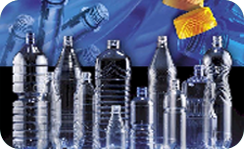UN Certification of Packaging Materials for the Transport of Hazardous Goods
UN Certification of your plastic containers is necessary when the goods that will be packaged are deemed hazardous. Whether goods fall under this classification or not needs to be determined by examining the regulations that apply in the country of manufacture and export if applicable. UN certification is a lengthy process that should be taken very seriously as it will affect the manufacturing process and ultimately the profitability of the operation for a year at a time.
The testing comprises of
- A dynamic top load test
- A 28 day stacking test (only for new submissions)
- A hydro-static test
- A drop test after container and contents (mostly anti-freeze) have been exposed to –18ºC for 48 hours. The drop
height will depend on the packaging group classification your product falls under
- Determination of all relevant wall thickness values such as sidewall, bottom, top, and radii as well as weight.
The certificate expires after one year and new containers must be resubmitted for an abbreviated certification test provided the packages and goods to be packaged have not changed.
At the onset of this process it is important to understand that the submitted containers will determine not the average of the performance parameters but the legal minimums. To give an example, let's say a drum has a minimum sidewall thickness of 3.43 mm or 0.135". If certified with this wall thickness it will be illegal to package the goods into a drum with less than this wall thickness. My efforts are therefore directed to producing the most lightweight container possible that will still pass UN certification. In production, this container will be run at a higher weight ensuring it is always legal even when process fluctuations reduce wall sections or weight beyond the established production values. Because the UN certificate gives minimum wall sections for the five areas as mentioned above, it is paramount to submit samples with low values in all five areas.
To assist in this process you should have access to a dynamic top load tester. Since you will have to do quality control on a regular basis you as processor will need this instrument anyway so you might as well buy it at the onset of the process. Containers manufactured at the lower weight should be tested for top load, hydro-static test, and drop test before attempting to submit the samples to a certified lab.
UN Certification of Packaging Materials for the Transport of Hazardous Goods
The lab will then test your containers, record the legal minimums and issue a certificate valid for one year.
There is much confusion about the proper or minimum weight for L-Ring drums. The L-Ring is a thick rim at the top and/or bottom of the drum that so-called parrot beaks (this is not a typo, they are actually called that) use to pick them up one, two, or four at a time. In older design, this rim was separately extruded and welded onto the top of the drum or injection molded during blow molding. All new designs feature one-piece drums with blow molded L-Rings. The strength required for these rings depends at lot on the goods to be packaged in the drum. If it is oil or water with a density of or close to 1 g/cm3 a drum weight of 8 kg (17.6 lbs.) has been successfully used. However, if the content's density is substantially higher, the L-Ring on a 8 kg drum will most likely fail as it cannot support the increased weight. You must therefore know what will go into the drum before you set out to determine the correct weight and quote a corresponding price to your customer!
Material selection is also crucial at this stage. In order to get the weight down a very stiff material has to be selected. A 8 kg drum will most likely have been made using a resin with a HLMI of around 3 g/10 min. (If you are not sure about MI and HLMI, check out Melt Index Mysteries Solved). Even then this drum might not be suitable for contents with a density of 1.5 g/cm3 or higher. In the US, most companies use resins with a HLMI of 8 to 10 g/10 min and consequently, drums manufactured in the US are on average at a higher weight than their European counterparts that were made with the lower HLMI resin. Since BP Solvay stopped making their low HLMI resin earlier this year (2005) the two remaining candidates are made by Bassel and Atofina and both are in powder form. There is talk that Bassel will change to pellets at some point but that remains to be seen. You will need a grooved extruder with a L/D ratio if at least 28 (30 is better) to be able to run these resins. And you will need hopper loaders that can take powder rather then pellets. So again, proper planning at the outset is essential for success.
While regulations vary by country, all stipulate that operators and supervisors be trained in general awareness and job specific functions. In the US, the Bio Terrorism Act also requires extensive book keeping of the lot numbers of all materials that go into food that is being packaged. If you are just a converter, this does not apply to you but as a filler you must have all documentation ready for a possible inspection that may happen at any time. Heavy fines in the tens of thousands of Dollars await those that do not have them ready for inspection. While I do not do the safety training, I can direct you to professionals that do.

 The experts at Apex Container Tech Inc. are here to assist you in your current business or with starting a new one
The experts at Apex Container Tech Inc. are here to assist you in your current business or with starting a new one
 The experts at Apex Container Tech Inc. are here to assist you in your current business or with starting a new one
The experts at Apex Container Tech Inc. are here to assist you in your current business or with starting a new one









